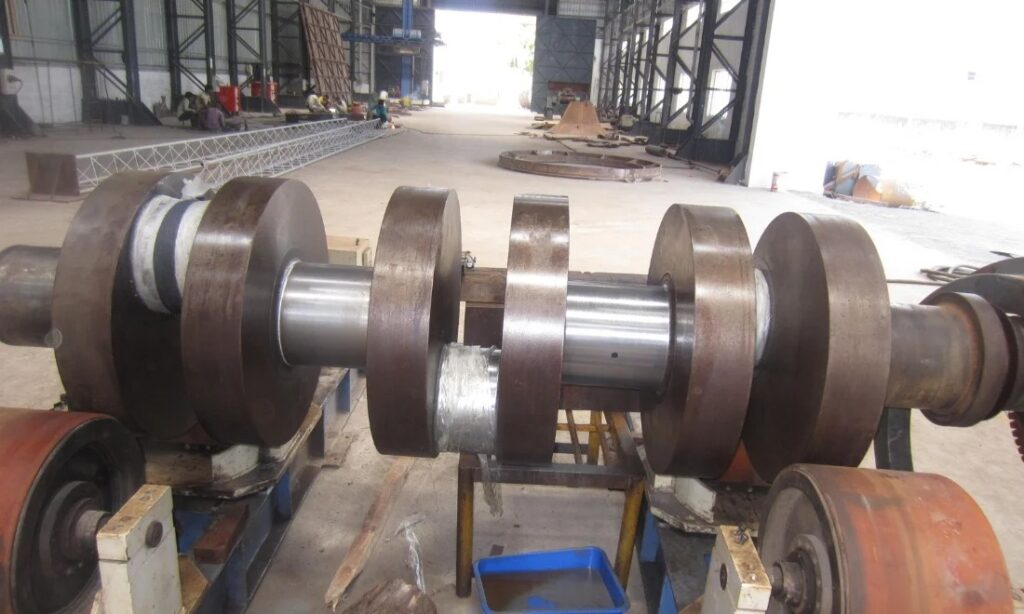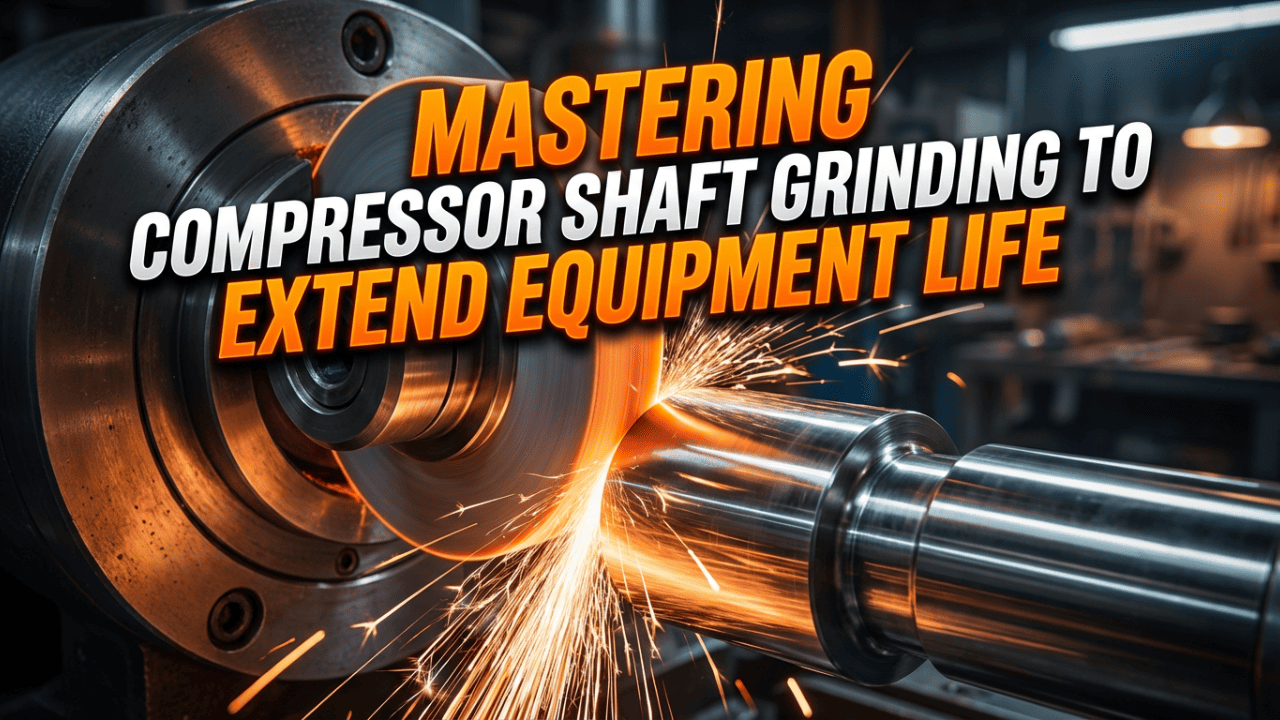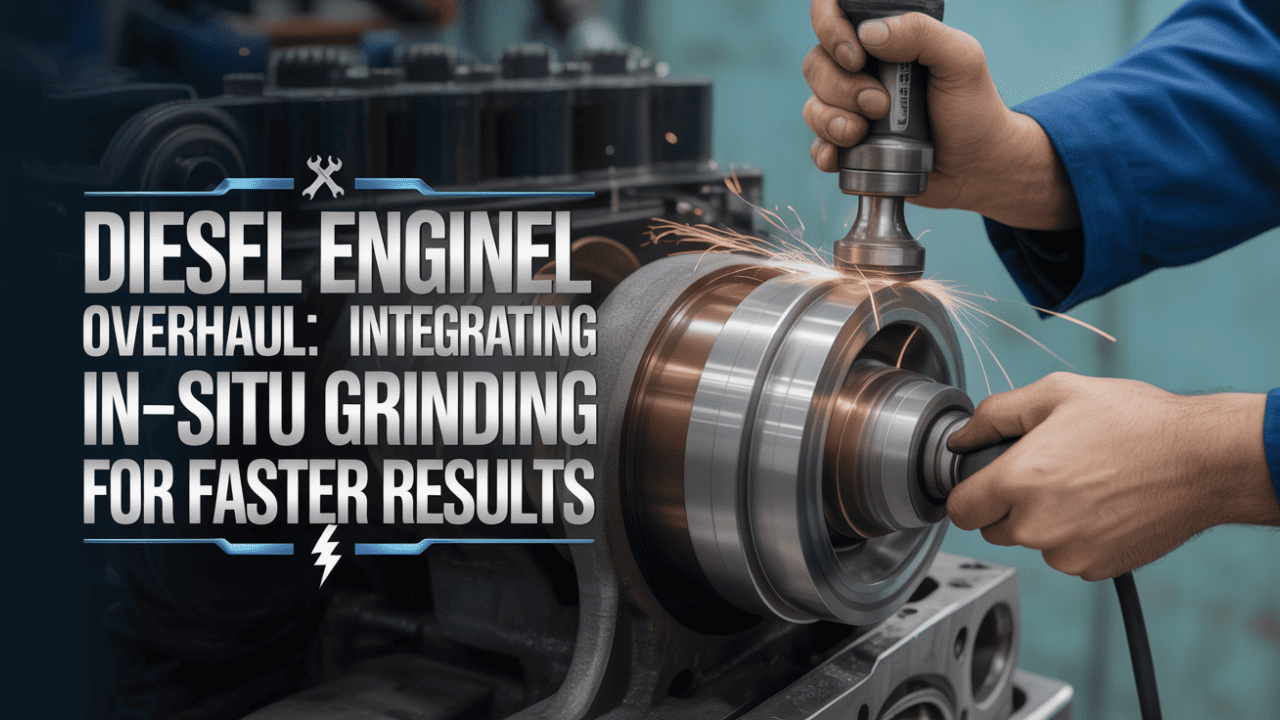The process of converting the piston action into spinning power is very important. This is why the crankshaft is the most critical engine element; it does the process perfectly. This is the crucial element that converts the pistons’ straight motion into the spinning force of the vehicle. Eventual engine wear may cause it to damage the operation or create other much worse issues. Surface damage and misalignment may be the result of friction, insufficient lubrication, and, of course, operating stresses.
All these flaws become threats to the engine’s dependability and performance. So the engine may need expensive repairs or replacements. Crankshafts used to be removed from engines. They were shipped to a particular facility to be cut and then produced. The process is time-consuming and costly since this very technique is quite laborious. After all the repairs, the engine has to be disassembled. It should send the crankshaft to the shop. The engine must then be assembled. This lengthy procedure might idle the equipment or automobile for a long period, which is problematic for firms that must work 24/7. Here we will be discussing why professional Crankshaft Repairing services are essential for this process.
Understanding In-SUnderstanding In-Situ Crankshaft Grindingitu Crankshaft Grinding
In In-situ Grinding of Crankshaft or on-site crankshaft grinding, a crankshaft is repaired without its removal from the engine block. A portable grinding machine is used for accessing and grinding crankshaft journals, or bearing surfaces, inside the engine. This solution reduces the normal time and effort of repair by resolving engine faults locally. This technology is ideal for large, heavy engines in ships, power plants, and industries, where disassembly is very difficult and expensive.
Traditional crankshaft replacement vs. in-situ grinding
Previously, the crankshaft of the engine had to be ground or replaced by disassembling the engine. Unfortunately, this process takes days or even weeks and is very expensive due to increased labor. Moreover, when the engine parts are reassembled after maintenance, some may require tuning, therefore making the repair more cumbersome and expensive.
Specialised Tools and Methods:
A small, portable device, fitted with an abrasive grinding wheel and accurate positioning, is used in In-situ Grinding of Crankshaft. The operator positions the machine on the crankshaft bearings and then uses specialised grinding stones to remove blemishes and get the parts back to their original size and shape. To maintain the critical limits and accuracy of the process, accurate measurements are taken throughout the operation.
Benefits of In-Situ Crankshaft Grinding
Some of the advantages of in-situ crankshaft grinding over replacement are:
Cost savings:
In-situ grinding obviates the need to take the engine apart, reassemble it, and probably replace the crankshaft, all of which incur a reduced cost of repair. No extra cost for moving or hiring someone for the crankshaft disassembly and re-assembly will be incurred. There are no new engine components required, so the overall Crankshaft Repairing cost is very low.
Faster Turnaround Time and Reduced Downtime:
In-situ cutting will reduce downtime since the engine will not be removed, so equipment may be used sooner. This is critical in commercial areas that must work smoothly. Quick turnaround times help with production planning and outputs by getting equipment and automobiles back to work quickly.
Improved performance of the engine and gas mileage:
In-situ grinding polishes and resizes crankshaft gears for reduced friction and wear. The result could be improved performance of the engine and saving of petrol. Careful drilling ensures the crankshaft works as projected. This can increase speed, reduce emissions, and save on gasoline. In the long run, it improves the efficiency and lifespan of the engine.
Common Crankshaft Issues Addressed by In-Situ Grinding
We recommend in-situ grinding for crankshaft issues.
Recording Damage and Ratings in Crankshaft Journals:
A Report Friction between the bearing and crankshaft could wear and cut. These problems can damage the engine. In-situ grinding removes these surface imperfections to provide a smooth, usable surface that improves engine performance and crankshaft longevity.
Surface imperfections:
Micro-gouges, nicks, or manufacturing faults in a crankshaft may affect engine performance. Problems like uneven bearing wear may make the crankshaft turn hard. In-situ grinding solves these flaws by carefully taking material from the damaged regions, improving bearing contact and performance. This maintains engine balance and performance.
Bent or alignment Too much or too little grease:
If the crankshaft becomes too hot or is provided with too little grease, it might flex or misalign and cause serious problems. Some of these faults can be repaired in situ by re-grinding the crankshaft to its original specifications. Therefore, the crankshaft is taken back into work, and further deterioration is checked so that engine performance remains intact.
Recovery of critical dimensions and specifications:
The wear of the crankshaft outside of standards may affect the working performance of an engine. The crankshaft can be precisely machined in the engine to its best working condition. This procedure maintains the necessary measurements and standards in order to keep the crankshaft within its limits, which improves engine performance and life expectancy. Due to the fact that this ordered repair method spares one from purchasing new crankshafts and waiting to be fixed, it is reliable.
The importance of precision and expertise
Success depends on the accuracy and competence of in-situ crankshaft grinding professionals.
Skilled technicians and machinists:
The experienced machine operators, with great care, regulate the grinding tools to remove the proper amount of material and preserve the crankshaft. They are successful because they can deal with complicated gears and understand the mechanics of the engine.
Accurate set-up and alignment:
The crankshaft grinding machine has to be perfectly aligned with the bearings of the crankshaft for the best results. Professional technicians make use of specialised equipment and ways for setting up everything before cutting. This alignment is very critical, and it avoids adding extra faults and provides equal material loss.
Dimensions and Surface Finish:
Grinding smoothes and levels crankshaft gears. Technicians measure and watch the material being taken off for the ultimate product to fit engine size specifications. Good surface quality and precise specifications reduce friction and ensure the crankshaft performs effectively in the engine.
Quality Control and Inspections:
Reliable service providers always check the grinding process for quality and standards. This might require special measuring instruments and surface roughness scales. Quality control and periodic inspections highlight deviations from the requirements. Hence, problems are fixed in time, and the best job is produced.
Applications and Industries:
In-situ crankshaft grinding is also used in various fields, including the auto and transport industries. The crankshafts of large trucks, buses, and industrial machinery may be cost-effectively repaired by in-situ grinding. Automobile and equipment efficiency is maintained with lower downtime and an extended life of the components.
Marine and on-site machines:
Crankshaft in-situ grinding of the engines keeps the marine engines running. This process keeps large engines, compressors, and pumps running at their best.
Energy and power industries:
In-situ crankshaft grinding saves a lot of time and money on overhauls. This is mostly in power plants and large industrial engines. That is continuous generation of electricity while reducing operational outages for easier corrections.
Useful examples and case studies:
Grind a bearing fixed to a wind turbine engine for a wind farm operator. It worked perfectly in the green energy business by reducing downtime and keeping electricity supply at optimum. In-situ cutting fixed a haul truck engine for a big construction company with a deadline. This simple repair made the vehicle usable once again, keeping the project on schedule and saving money on delays.
Choosing the Right Service Provider
The importance of selecting the correct in-situ crankshaft grinding service supplier
The factors to consider include:
Experience and skill: The firm should be experienced with in-situ crankshaft grinding and have a long history. Professionals who are experienced can be able to assess the crankshaft and advise on whether in-situ crankshaft grinding is feasible and the course of action to be taken. Their experience ensures that the remedy applied works and further damage is not caused.
Equipment and Gear Specifications:
The business offering the services should use a new, well-maintained cutting tool for the engine type. High-end gear is required for grinding accurately and achieving surface smoothness and dimensions. Well-maintained machines function better and make fewer errors.
Certification and Quality Assurance:
Find companies that meet industry standards and have strict quality control. Professional qualifications demonstrate that trusted service providers take quality and safety seriously. These certifications usually show that the firm respects industry standards.
Quality assurance and certification standards:
If you contract a reputed service provider that cares for quality assurance and industry approval criteria, in-situ grinding will be done to the highest standards. These certifications require careful examination and testing to ascertain that the repaired crankshaft is done to meet or exceed the specifications of the OEM.
Conclusion
Lastly, in-situ crankshaft grinding is a new technology in engine rebuilding. Most firms prefer it as it reduces downtime, preserves the crankshaft, and reduces repair costs. The in-situ grinding process is an affordable and effective method of maintaining engines in vehicles, boats, power plants, and industries. The MPA Power Project is just about the best for in-situ crankshaft grinding. Numerous features make them the perfect choice. MPA Power Project realises the requirement of having minimum downtime during the process. Their straightforward process and quick service will have your engine up and running quickly. If you contact MPA Power Project for in-situ crankshaft grinding, then your engine is in safe hands. For reliable, fast, and affordable engine repair, choose MPA Power Project.











No Comments